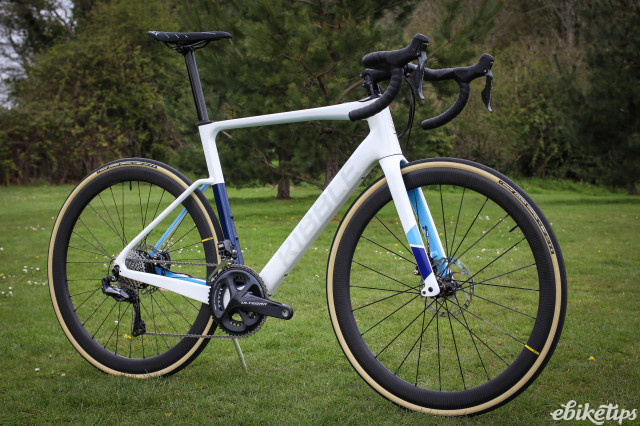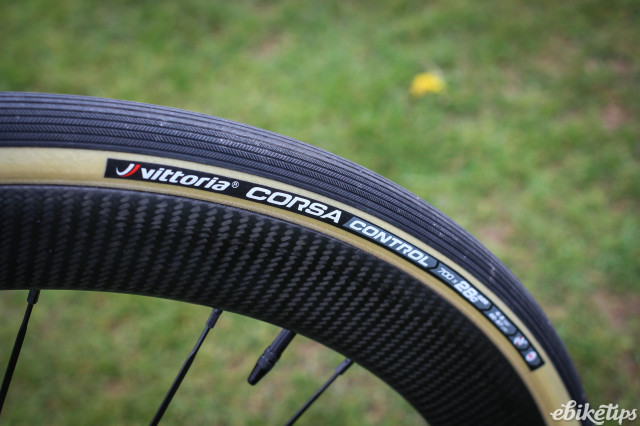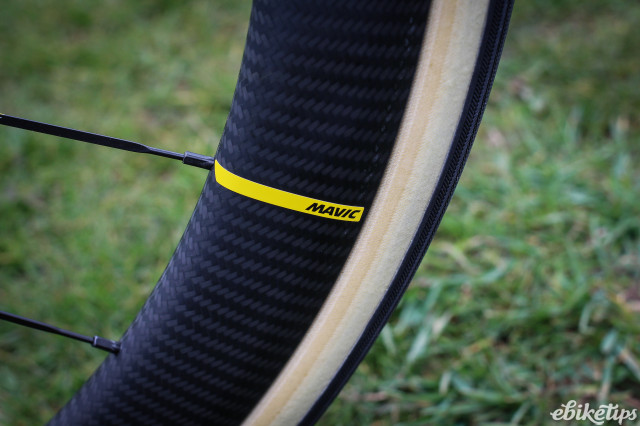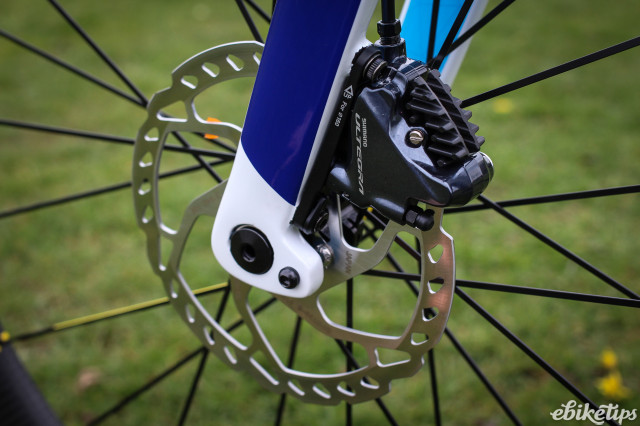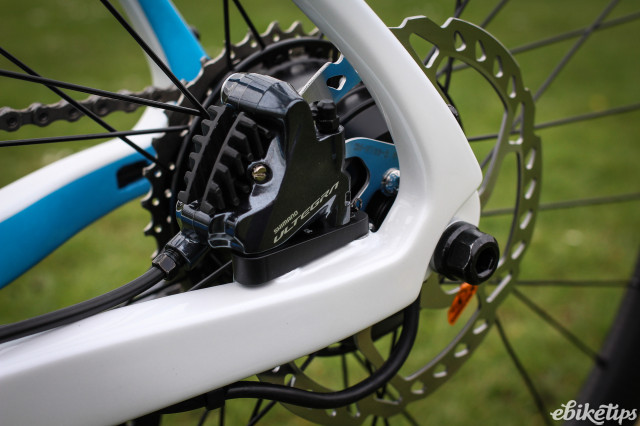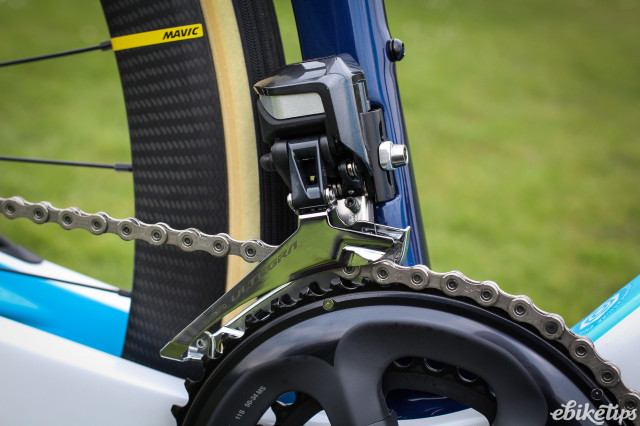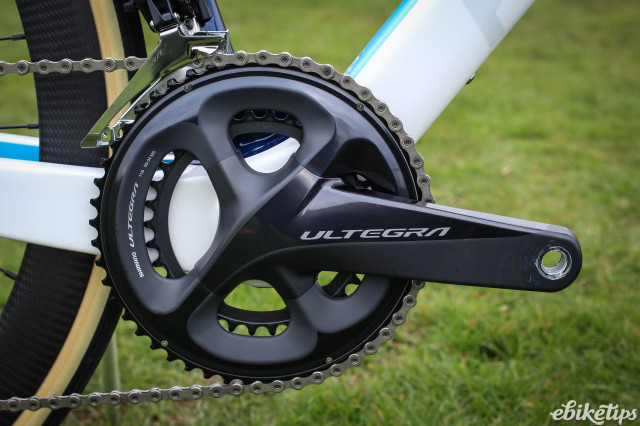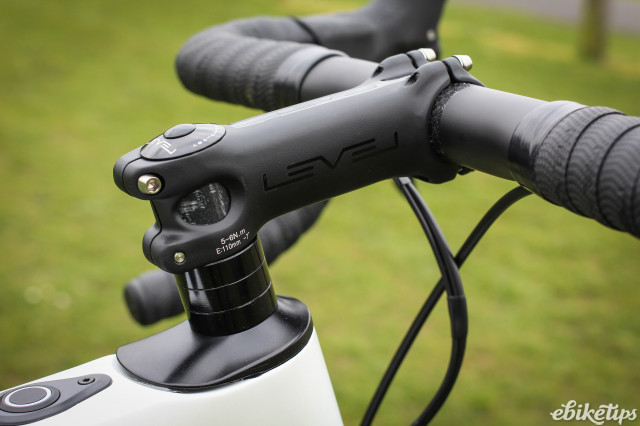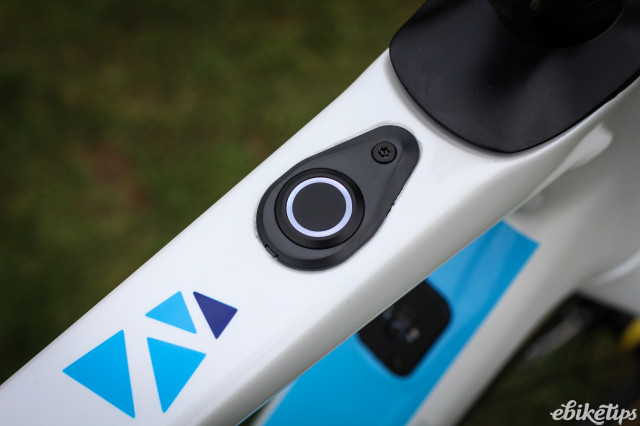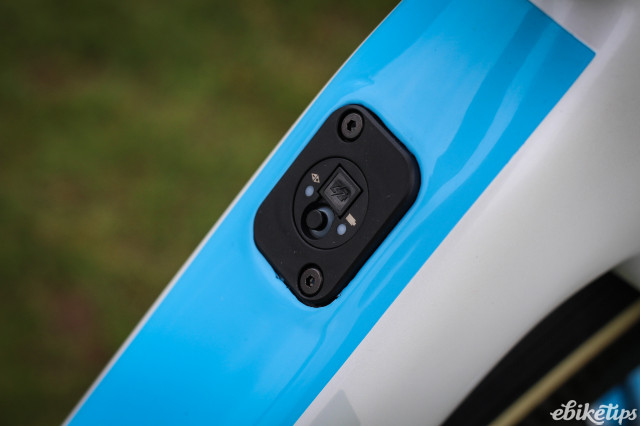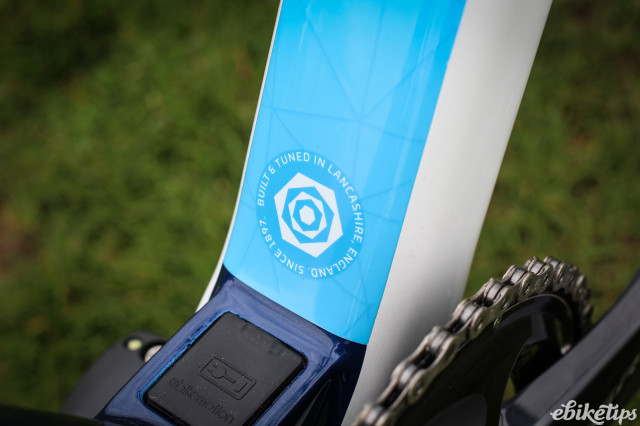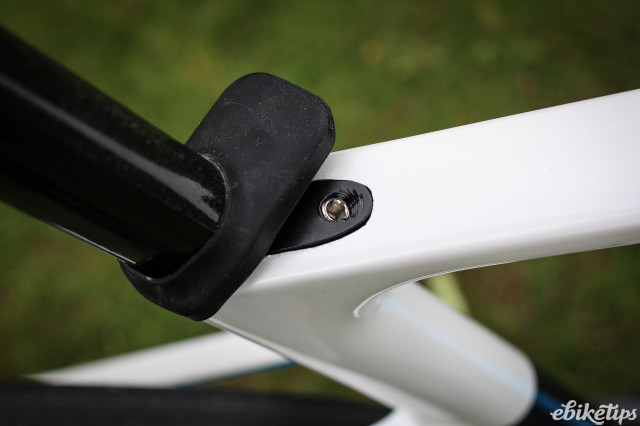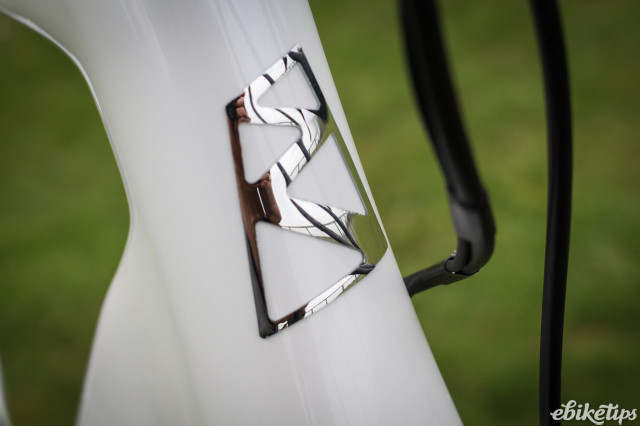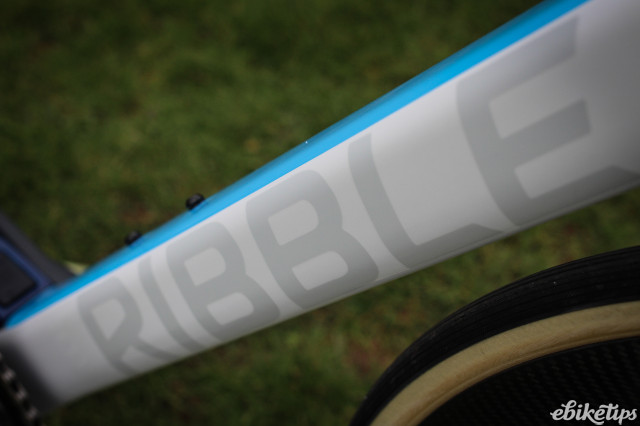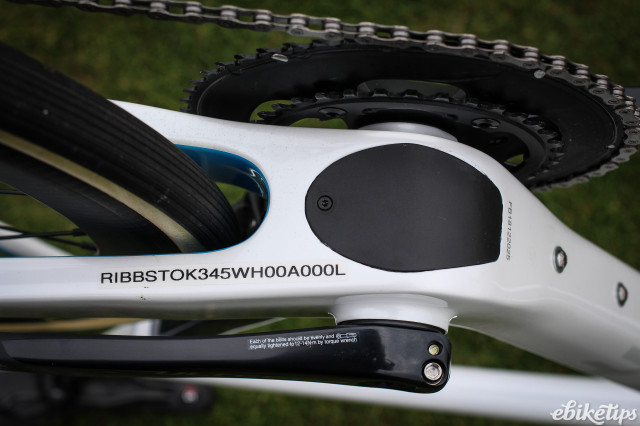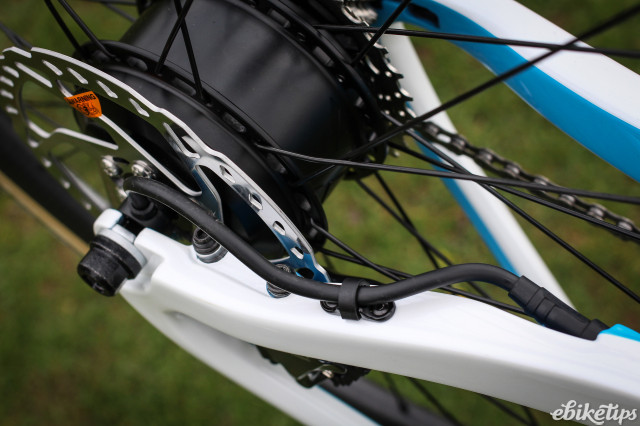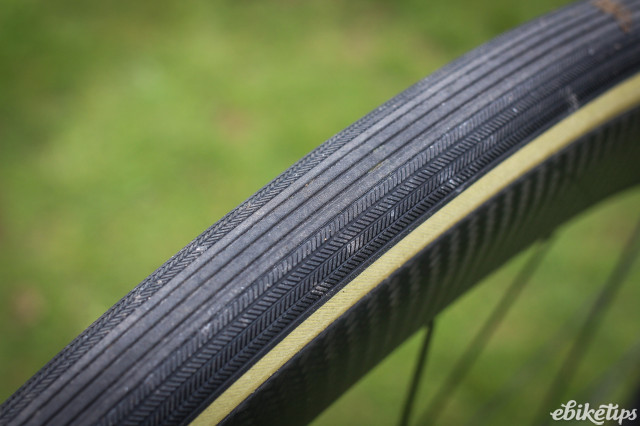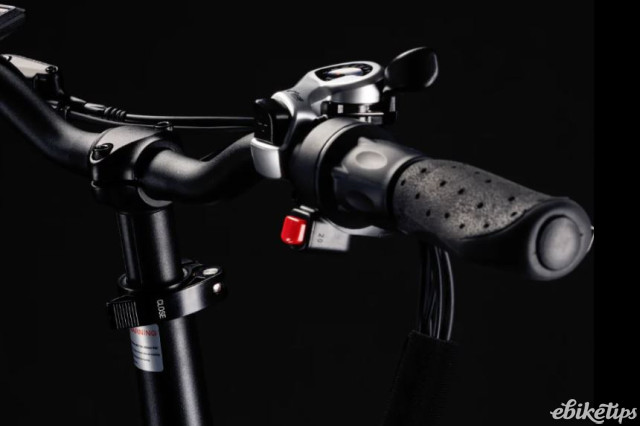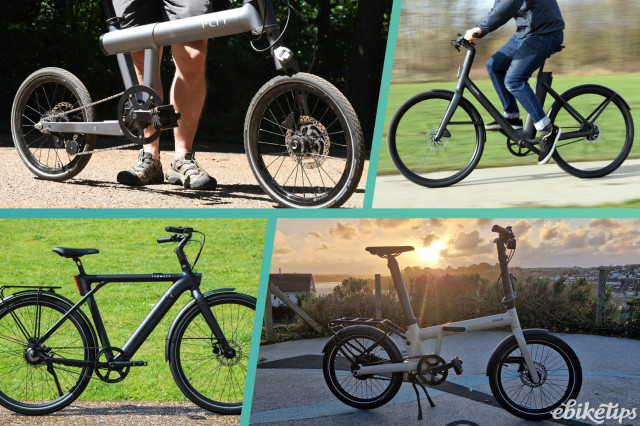Review: Ribble Endurance SLe Di2
Overview
- About as light as e-road bikes get
- Enjoyable, comfortable ride
- Very high quality build
- Motor not as powerful as some
- Charging port is in a vulnerable position
We’ve got to the point where it’s not a surprise that anyone is entering the e-bike market, but we maybe weren’t expecting Ribble to step up to the plate. It has, though, and what it’s produced is a really excellent lightweight electric road bike that’s fun to ride, gives useful assistance on the climbs and is happy to roll along under just leg power too. The integration is neat, the frame and build comfortable without sacrificing performance.
Buy the Ribble SL e Endurance here
Ribble has been working hard of late to brush off its slightly fusty and traditional image born from decades of selling good race bikes cheap, and this SLe will do that fight no harm at all: it’s parachuting in right near the top of one of the most talked-about sectors of the bike market. They've called this frame platform the Endurance; the e-road bike SLe frame is derived from the Endurance SL disc and there’s a higher-spec SLR too with higher-modulus carbon for a lighter overall weight.
‘Endurance’ maybe makes you think that it’s a bit of an upright chugger; it’s not. Our large frame has a stack-to-reach ratio of 1.41, which is pretty racy for a large frame, and the SLR is the bike that Ribble’s professional team are riding in the pro peloton. It’s not a bike that’s designed to be pootled around on. The ride is purposeful, to say the least. It’s not an endurance platform in the sense of giving you a soft ride: the frame is race-bike stiff when you stamp on the pedals, and you get plenty of feedback through your hands and rear. That’s not to say it’s uncomfortable, though. The carbon seatpost has a bit of flex, and out build included carbon bars too, and Vittoria’s excellent Corsa G+ tyres in a 28mm width, which were confidence-inspiring in corners and big enough to soak up some of the road chatter. It’s more or less in the sweet spot of feeling fast without being harsh.
The SLe frame is widened at the down tube to incorporate a battery, but elsewhere it keeps most of the aero touches of the non-powered bikes. There’s a lot of truncated airfoil profiles in the main frame, along with dropped stays and an optimised fork profile. There’s internal cable routing throughout as well. It looks tidy, and it feels fast when you wind it up. The mid-section Mavic Cosmic Carbon Pro wheels – a £600 upgrade option – help with that. Ribble claims that the non-powered bike offers up 28.5% less drag than the previous version, which is some saving.
The ebikemotion system that Ribble uses to power its e-bikes is pretty straightforward. There’s a button on the top tube that gives you access to three levels of assistance, and also shows you your battery state. You can edit the three power settings and get more granular battery information by hooking up your bike to the ebikemotion app on your smartphone, which also does activity tracking and routing if you’re into those things.
The 250Wh battery is hidden within the down tube and the power is applied from a small hub motor in the rear wheel. You’d not really notice that the down tube of the Ribble is bigger than any other carbon road bike, and between the disc brake rotor and the cassette the hub motor isn’t really obvious either. I’ve showed this bike to plenty of experienced cyclists who didn’t clock that it was an e-bike at all. It’s very neat.
The motor is rated at 40Nm; it’s not the most powerful assistance out there but it definitely helps, as you can easily prove to yourself by turning it off halfway up a climb and slowing to an inelegant crawl. The assistance cuts in and out very smoothly too, and it’s quiet to the point that you’d barely notice. The overall impression is of a system that’s unobtrusive in every way: it just gets on with the job of helping you when you need it.
Let’s talk a bit about range. Range is a very moveable feast on an electric road bike a lot of the time, even more so here because at just 11.6kg the SLe is more than happy under its own steam a lot of the time. With a heavier e-road bike you tend to buzz along on the flat above the 25km/h assistance limit, and as soon as the road points even slightly upwards you throttle back to just under the speed where the power kicks in, and sit there. With a heavy bike, that feels like the most natural thing to do. On the Ribble, you spend more time pushing on on the false flats and getting out of the saddle on short rises, because the bike responds more like a normal road bike when you do.
Here’s a graph of my speed on a test lap I do on all the e-road bikes I test, comparing the Ribble with the Giant Road E+ Pro. On the steep part of the climb up Cheddar Gorge [1] the Giant is much quicker thanks to its more powerful motor, but later on in the climb the speeds are more comparable as the gradient slackens. On the way back down both bikes are quick on the descent. After that there’s a rolling section [2] where the Ribble holds its speed much better than the Giant, before the final climb [3] where the Giant is faster again. Overall, the lap on the Giant was about 40 seconds quicker over 50 minutes. That’s riding on your own, where you can tailor your speed to the terrain and the help you get from the motor. If you get to dictate the pace then a heavier bike – the Giant is over 7kg heavier – is still quicker because the extra power from the motor easily outweighs any gains you might get on the flatter stuff. However, if you’re riding in a group then those are the times you’ll really feel the weight of a big bike like the Giant, and you probably don’t need to take five minutes out of your mates on the climbs, just stay with them. Heavy and light e-road bikes both have their merits; my rule of thumb would be to go heavier and more powerful if you generally ride on your own, and lighter and less powerful if you’re normally in a group.
I did my hot lap on the Ribble as part of a 115km ride that included nearly 1,800m of climbing. The battery was mostly depleted by about 80km after I’d dragged myself up Cheddar Gorge a second time, and I had the motor on full all the way round the timed lap. If I’d been more careful then I could have got the battery life over 100km, even with all that climbing. If I’d been riding in a group then I’d probably have been using lower modes on the climbs to stay with the other riders rather than forging on ahead; that would increase the range still further. Suffice to say that the range is probably as much as you’re likely to need, and if it’s not you can always lob the charger in a pocket (it’s not very big) to get a sneaky top-up at a cafe along the way. The battery’s not removable, so you’ll need to find one that’ll both let you take the bike inside and nick some power. The location of the charge socket – on top of the bottom bracket – seems to be the same on all ebikemotion bikes. It’s a daft position, really, inviting water ingress and corrosion. The socket has a waterproof cover, but even then it’d be better somewhere water won’t pool if it’s wet.
The SLe costs £4,854 in this build. That’s a carbon frame, Ultegra Di2 groupset, Mavic Cosmic Pro UST wheelset, carbon handlebars, Fizik Arione saddle and Vittoria Corsa G+ tyres. It’s fair to say that you’d struggle to get a bike that highly specced for that price from many manufacturers even without a motor system, so the SLe represents some pretty serious value for money even though this is a high-ticket bike. The range starts at £2,499 with a Shimano Tiagra groupset and Vision TriMax wheels if your pockets aren’t this deep. By way of a direct comparison the Wilier Cento1 Hybrid we recently tested uses the same motor system; We had that bike in a Di2 build as well and it was £5,199 with standard wheels, tyres and saddle, and alloy bars. The comparable build of the Ribble is £3,999.
Would I buy this build? Well, Ultegra Di2 is a brilliant groupset, and save for the saddle – I’m not a big fan of the Arione – the upgrades are well worth considering. The wheelset adds £600, but the RRP is over twice that, and of course even if you have your own posh wheels you’ll need to factor in swapping the rear hub for the motor. If you want to have deep section wheels, then the point of sale is definitely the time to get them. The carbon handlebars are an extra £120, and they’re very comfortable. You may not feel, with 28mm tyres underneath you, that you need the extra cushioning they provide, but the uptick seems fair. The Vittoria tyres are genuinely excellent, and a worthy upgrade over the standard wire bead Continentals for £75. They’re not the longest-lived tyres; if you’re out in all weathers then the Continental GP 4 season tyres would be a better upgrade choice for the same spend.
Overall this is an excellent bike. Of the lightweight e-road bikes I’ve tested recently, it’s my firm favourite. It’s not giving away anything in terms of performance to the Wilier Cento1 Hybrid [link] or the Pinarello Nytro [https://ebiketips.road.cc/content/reviews/electric-road-bikes/pinarello-nytro-1795], and it’s significantly lighter and less expensive. Ribble’s head badge might not have the cachet of a big Italian brand, but there’s no doubt for me that this is one of the leading lightweight e-road bikes right now. If you regularly ride with others and they regularly have to wait for you at the top of the climbs, this might be just the ticket. If you’re just out on your own enjoying the countryside from the tarmac then it’s still a great companion, although there’s an argument that a heavier, more powerful bike suits that type of riding better. There’s not many things to complain about here though, and there’s a build to suit a wide range of pockets too. As a first shot in the e-road bike market it’s as close to a bullseye as you could reasonably hope to get.
5 comments
I recently bought a Ribble SLe, it has transformed my riding experience.i suffer fro COPD and Asthma and climbing hills is a big problem, i can now keep up with the group on my club rides, no more waiting for the "Old Wheezer"
I too went for the Mavic Cosmic UST wheels over Di2, my budget would not stretch to both.
my wheel came already shop in Mavic own brand tubless tyres and a spare set of Continental Ultra Sports loose in the box, Result
The bike was sent out with the wrong size carbon Level3 bars, i contacted Customer services and they immediaty sent me the correct bars, new tape and a commitment to reimburse reasonable LBS charges for swapping them over. i cant sing thier praised high enough.
I think the Ribble CGR version that is being sold is only the AL version - they aren't doing a carbon CGR version that I can see.
The Ribble CGR is available as an ebike. Check out their website.
Ribble do sell the CGR as an ebike too: https://www.ribblecycles.co.uk/ribble-cgr-al-e/ It's the same ebike tech as the SLe
I wonder why Ribble didn’t chose to base the frame on their carbon CGR which has stack/reach more in line with other endurance bikes? I was in the market for an eBike after a recent injury and would want something in carbon that’s similar to my giant advanced defy, but this unfortunately is too aggressive (pro bike position). Unfortunate as I think the CGR looks like a wonderful platform for an eBike.

